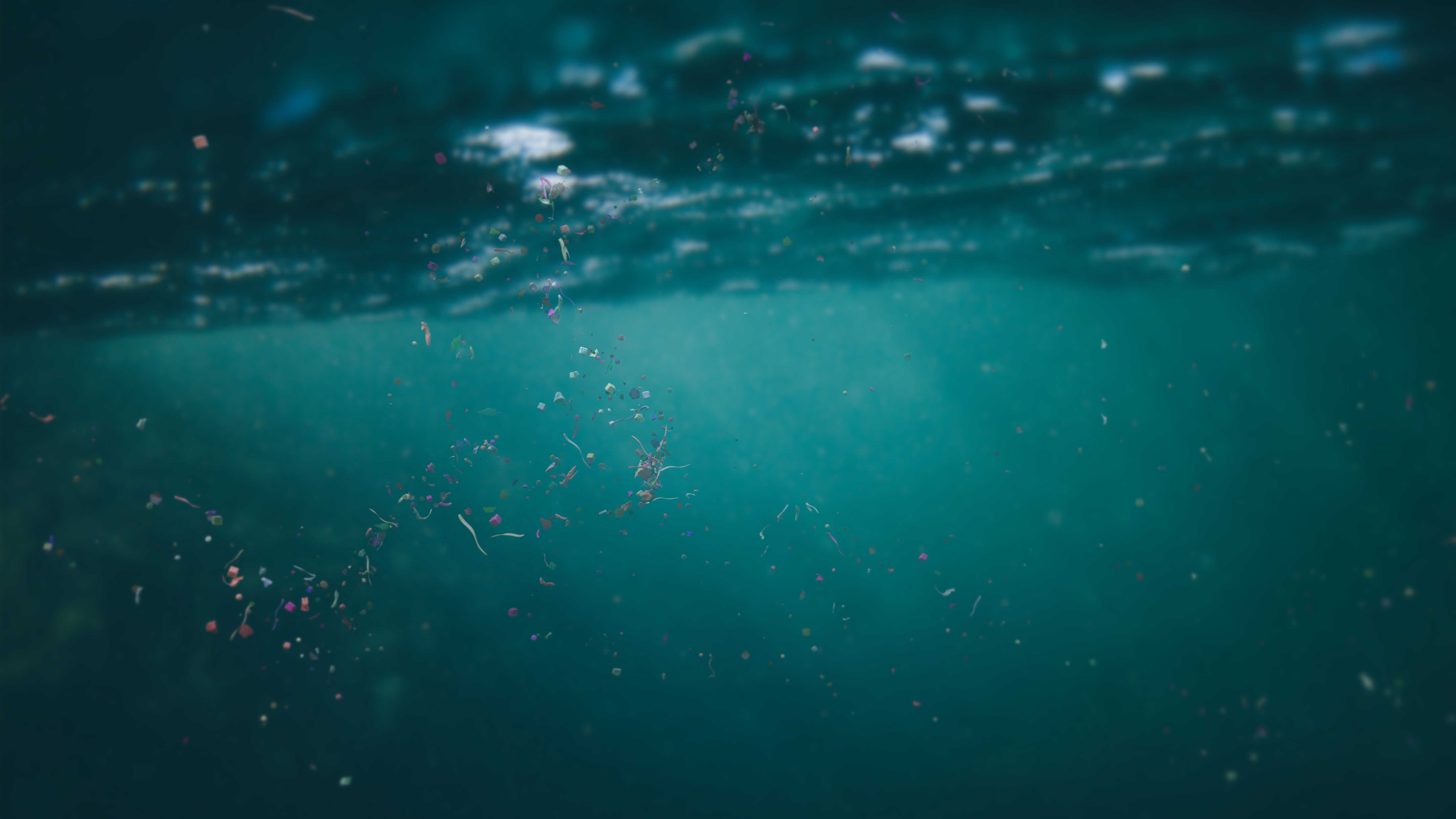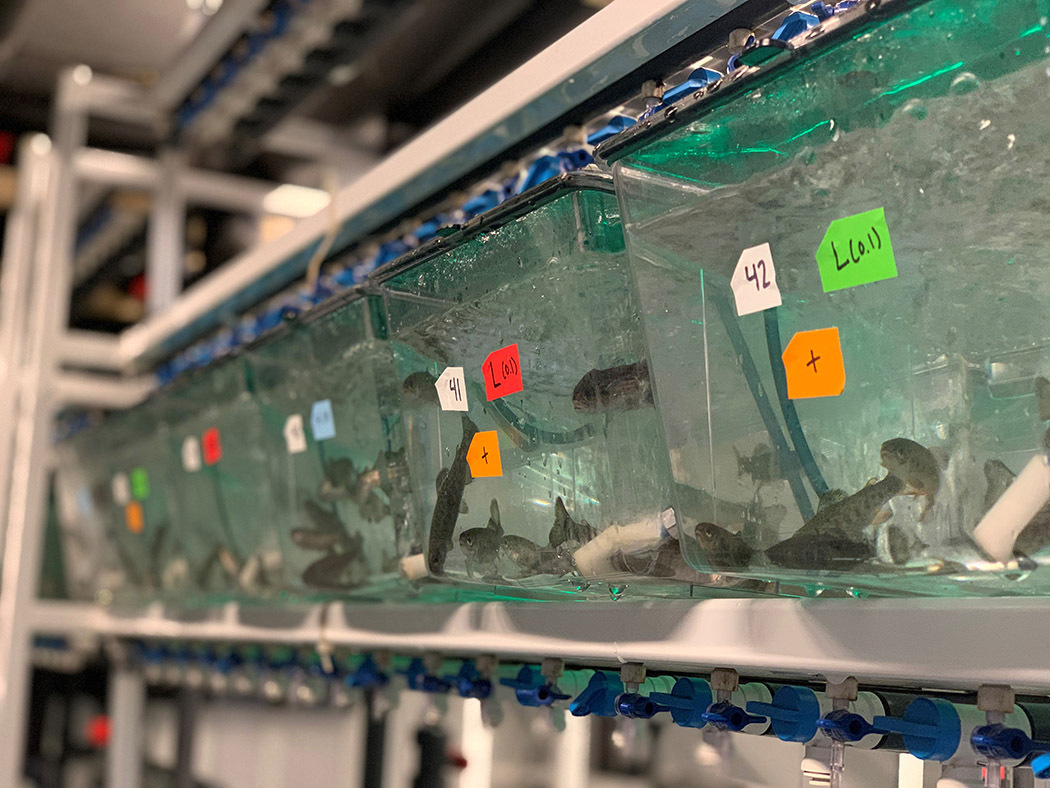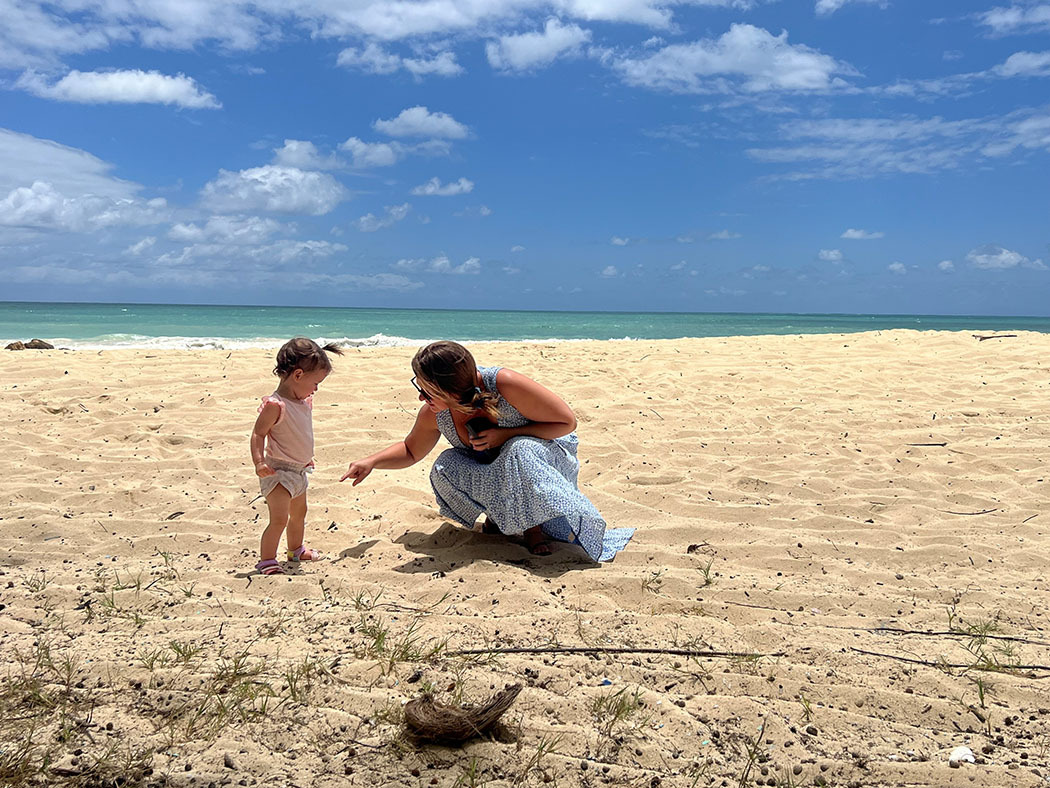Taking Measure
Just a Standard Blog

Since March 2020, most of us have had viruses on our minds, but viruses are not just a problem for humans. Viruses are common in our oceans and aquatic environments, too!
In fact, viral diseases are a major cause of fish death, particularly fish in crowded settings. Many fish we eventually eat live in densely populated, controlled environments, known as aquaculture facilities.
We’ve known for a long time that how much of a fish population dies from viruses varies based on their environmental and individual health factors (similar to humans and other animals).
We now know that microplastics — the tiny plastic particles that break down from plastic products we use every day — are universally present in fish habitats. They come from many places, but fishing gear is a major source. Fishing gear is made from plastic materials and fibers. As the gear is used in the water or gets lost in the ocean, those particles break down into microplastics.
My team and I wanted to know — how does the presence of microplastics in a fish habitat affect fish’s ability to ward off viruses? And what does this mean for both the health of fish and the health of people in a world full of microplastics?
Comparing Virus Responses in Rainbow Trout
In our study, the fish exposed to microplastics (such as polystyrene microplastics and nylon microfibers) and a deadly fish virus died more often than the ones that were exposed to the virus alone. This was particularly evident for the nylon microfibers. At the highest dose, fish exposed to nylon microfibers and the virus were 6.4 times more likely to die than those exposed to the virus alone.
There was no significant difference in death when fish were exposed to the natural microparticles (made of sea grass) and virus than virus alone. This is a key consideration in microplastics research. That’s because there are a variety of other organic microparticles from natural origins of the same size as microplastics. Those microparticles originate in the natural environment, such as from the breakdown of plants and feces. To understand the damage from microplastics, it’s critical to compare the effects of natural microparticles to human-made microplastics.

We predicted that the fish being exposed to microplastics and virus at the same time would have higher mortality. Many types of microplastics have been shown to increase stress and compromise the immune systems of fish. Based on previous research, we expected the polystyrene to be more harmful to the fish than nylon microfibers. But the results of our study showed the opposite was true. Nylon microfibers had the greatest effect. This research offers important new measurements and data that other researchers can build upon.
In measuring the immune system and gill tissues, we noticed that the nylon microfibers led to a mild inflammatory response in the fish. While this needs to be studied further, we suspect the fibers may have created damage and stress in the fish’s gills and digestive tracts. Since this is where viruses enter the fish, it may have allowed the virus to infect its host more easily.
This result is concerning, as microfibers from clothing and fishing gear are extremely abundant in the environment. This raises questions about the long-term health of fish if we do not address the microplastics crisis.
The Future of Microplastics Research
This research is a step forward in understanding the complex ways that chronic exposure to microplastics in the environment can affect the health of ecosystems and animals (including humans). While we can’t predict whether this effect would be similar on people or other animals, it should be explored in future research.
Plastic production is increasing globally, but laws or technologies to reduce plastic waste’s leakage into the environment are not growing equally. Researchers expect plastic pollution to grow in the coming centuries.
Plastic has now infiltrated every part of the world, including the human body. It’s important to understand what aspects of plastics, such as their shapes, chemistry and size, are most damaging. This will allow us to build smart strategies to reduce the impact plastic has on human and environmental health.

That’s where my research at NIST comes in. To address a problem, we have to be able to measure it.
I’m using advanced technologies to better characterize and measure plastic pollution in marine environments. Instead of extracting and manually counting the number of plastic particles in a sample of seawater, for example, I am working on methods to weigh the amount of plastic in a complex sample quickly. This will speed up this important research.
We don’t just need to measure microplastics, we also need to understand what they’re made up of. I’m also working to understand many characteristics of plastic samples — such as what chemical additives are found in the plastic (which can be toxic) and how the chemical makeup of a plastic changes as it travels through the ocean. This is a bit like forensic science, trying to understand the extent and effects of plastic pollution.
Protecting Our Oceans Is Personal to Me
As marine scientists, most of my colleagues have had a long relationship with the oceans.
My love of the ocean didn’t start until I was 15, when my older brother took me scuba diving on a rare family vacation to Hawai‘i . I was fascinated by the underwater environment — full of life, color and amazing adaptations to life!
As my interest grew, I quickly learned that there are few pristine marine environments on Earth. Most have been affected by growing human influence, in the form of habitat changes and pollution.
I wasn’t lucky enough to find a home near the ocean until I was 23. Now, I live and work in Hawai‘i — next to one of the oceans I’m working to protect.
I take great satisfaction knowing that my work will help preserve ocean environments for future generations, including my daughter, who already loves spending time in the ocean sand and waves with her mama.
Note: All fish were hatched, reared and cared for at the Virginia Institute of Marine Science (VIMS), where the research was conducted, according to guidelines from the Institutional Animal Care and Use Committee.
About the author
Related Posts
Comments
Thank you for the work you do.
Do we have any idea how these microplastics effect human health? What about farmed fish? I have read they use pesticides and antibiotics in these "farms." Should we avoid fish altogether?
These are great questions! Currently, we need more research to say anything about human health. Farmed fish are certainly exposed to plastics, but many remain in their digestive tract or are excreted, meaning they are not exposed to humans through the organs we eat (i.e., filets, not the stomach). It's difficult for me to comment on all of the exposures possible through fish farming, or advise if you should/should not eat fish. But I can say, I do eat fish - after checking if they come from a sustainable and reliable source. You can decide this with resources like the Monterey Bay Seafood Watch program website (https://www.seafoodwatch.org/) or phone application.
I was literally the first one to address marine micro-plastic over 30 years ago in a series of lawsuits that lasted over 20 years. Both government and industry spent millions defending it.
Thank you for your early work in this field!
Studies have shown that up to sixty percent of microplastics originate from tyre wear with a toxic cocktail of chemicals including endocrine disruptor's.
"Small Particles, Big Problem: Measuring Microplastics' Impact on Fish" is an enlightening and thought-provoking article that sheds light on an urgent environmental concern. The growing prevalence of microplastics in our oceans is not only a testament to our unsustainable consumption habits but also a grave threat to marine life, particularly fish.
The article effectively highlights the pressing need for comprehensive research and measurement techniques to assess the impact of microplastics on fish populations. As these tiny particles infiltrate the food chain, they pose significant risks to the health and well-being of marine ecosystems, ultimately affecting human health as well.
It's alarming to learn about the potential consequences of microplastic ingestion by fish, such as impaired growth, disrupted reproductive systems, and even increased mortality rates. This emphasizes the importance of proactive measures to mitigate the release of microplastics into the environment and explore sustainable alternatives.
It's alarming to see the profound impact microplastics have on our aquatic ecosystems, especially considering their potential harm to fish populations. Your article sheds light on a critical issue.






Thank you for this very interesting article on a very important area of research and for writing it in such a clear, concise and accessible style